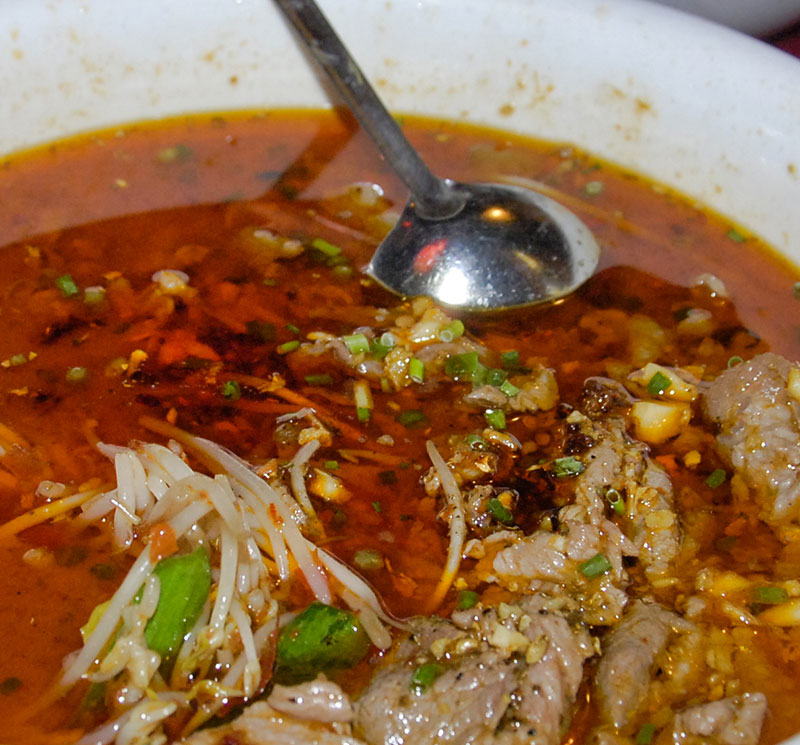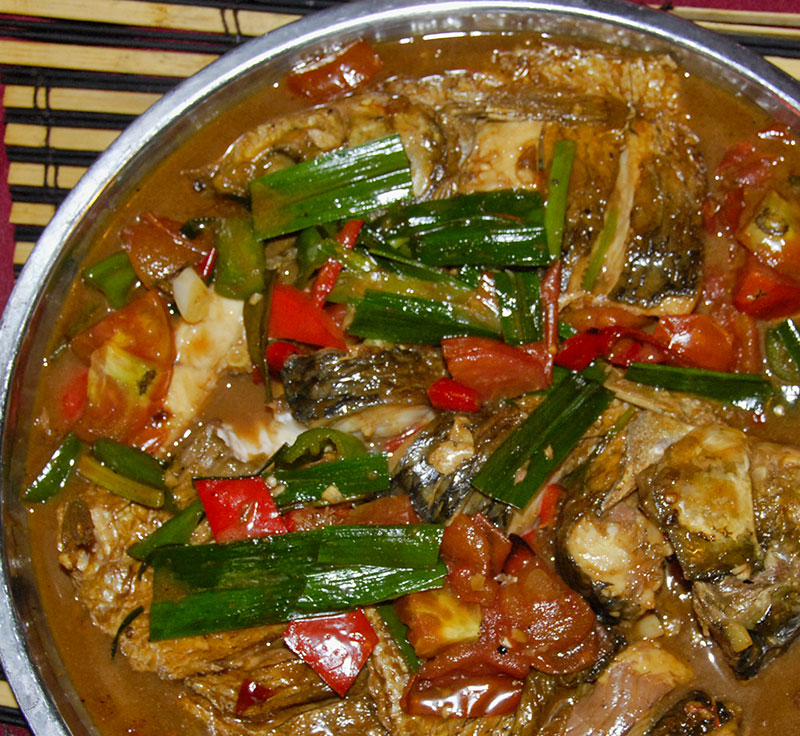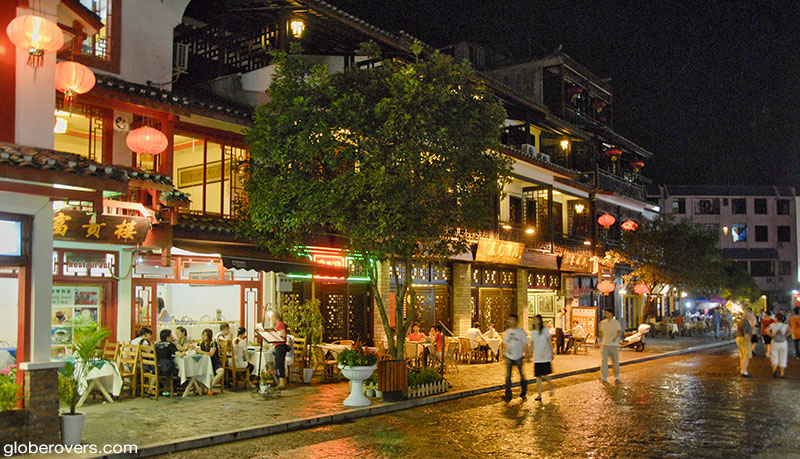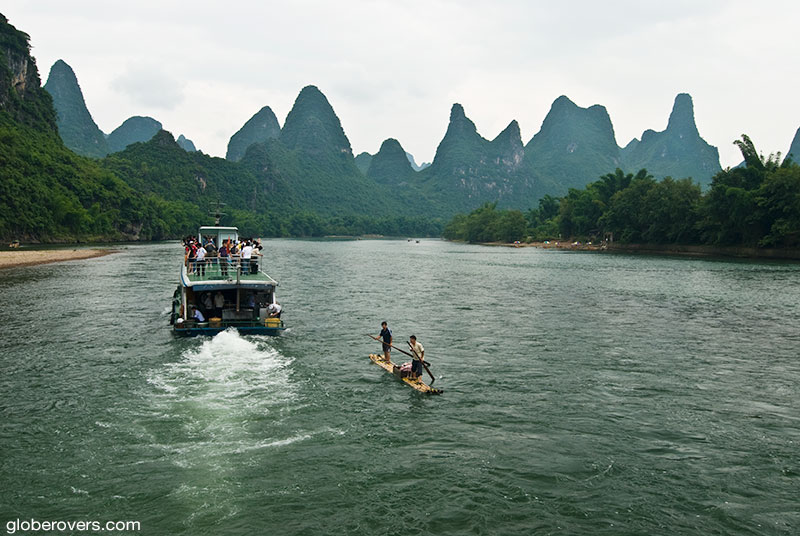
UPDATED JANUARY 9, 2020
The area around the towns of Guilin and Yangshuo is famous for its peculiarly shaped peaks, the meandering Li River, small tranquil villages of ethnic minority groups, vast rice terraces, and most notably, the local aromatic Guangxi food.
Guilin is packed with noteworthy sights including day and night cruises on the Li River, Elephant Trunk Hill, Diecai Hill, Pagoda Hill, Fubo Hill, “Tombs of the Prince” from the Jingjiang Ming Dynasty (1368-1644), and several spectacular caves including Lu Di Yan (the Red Flute Cave), Guanyan (Crown Cave), Water Moon Cave, and Seven Star Cave. In fact, you can easily spend a week in and around the town of Guilin, before getting on the boat south to Yangshuo.
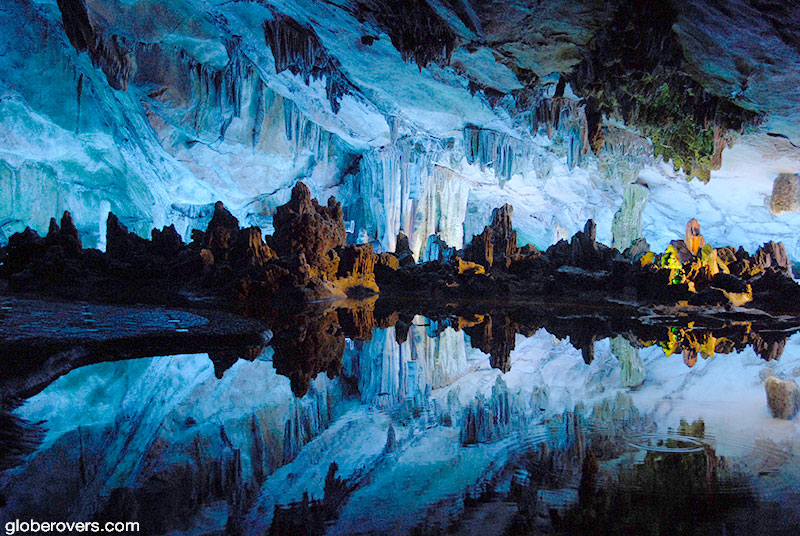
The people of the Guangxi Province are multinational with a total population of about 45 million. Besides the Han people, there are several ethnic minority groups including the Zhuang, Dong, Yao, Miao, Tong, Maonan, Yi, and the Shui. Stop by (or stay over) in the colourful Huang Luo Yao village for a dance performance by long-haired women and pretty girls. Gaze at the mud ploughing water buffaloes while sipping on local Chinese tea.
Floating down the Li River
The boat trip on the Li River from Guilin to Yangshuo will likely be the most memorable part of any visit to the Guangxi Province, if not all of China! The four-and-a-half-hour river trip on the 83 kilometre (52 mi) stretch winds past hundreds of gorgeous karst peaks which offer surprises at each bend. Water buffaloes and farmers work the muddy fields, peasants reap their rice paddies, school kids and cormorant fishermen float by on their bamboo rafts. This is top-notch breathtaking scenery!
China’s Guangxi autonomous region is known for its landscapes, minority groups, and delicious cuisines
Some boats leave from the dock south of the Liberation Bridge in Guilin, but most likely they will leave from a pier further downstream from Guilin – which is a 40-minute bus ride (or taxi) from town. Tickets can be bought at hotels in Guilin or at the pier. Fares are similar. For the cheapest fare, get on a “Chinese boat” and not a “Foreigner boat”. The Chinese boat offers a far more local experience and the fare is much lower.
The eye-feasting karst landscape, country farming, and village-life scenery will keep you snapping more photos than you expected.
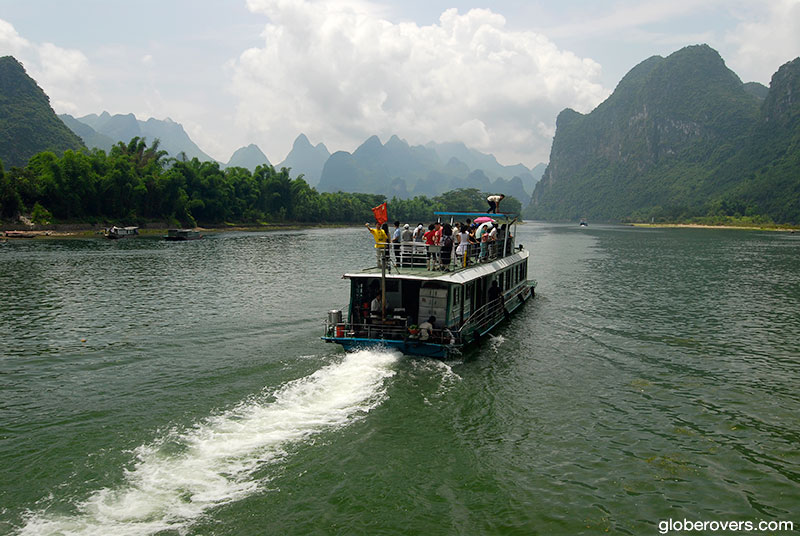
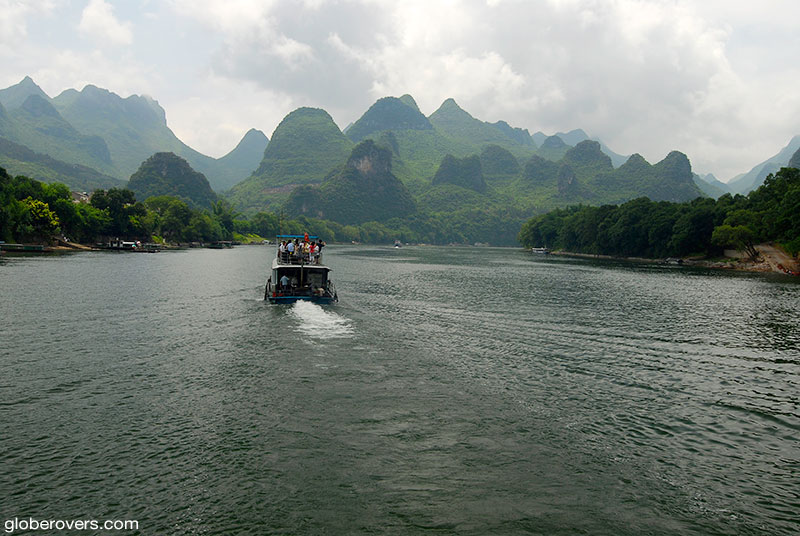
One of the first villages along the northern bank of the river is Daxu. This ancient town maintained its antique style from the early days of the Ming Dynasty (1368-1644). Its streets are lined with ancient residences, shops and tea stalls, as it sprawls out for almost two kilometres along the banks of the river.
Much further down the river between the villages of Yangdi and Xingping, the river passes an endless procession of stunning peaks, bamboo groves, and farming communities. Pinnacled peaks spread out after each bend in the river.
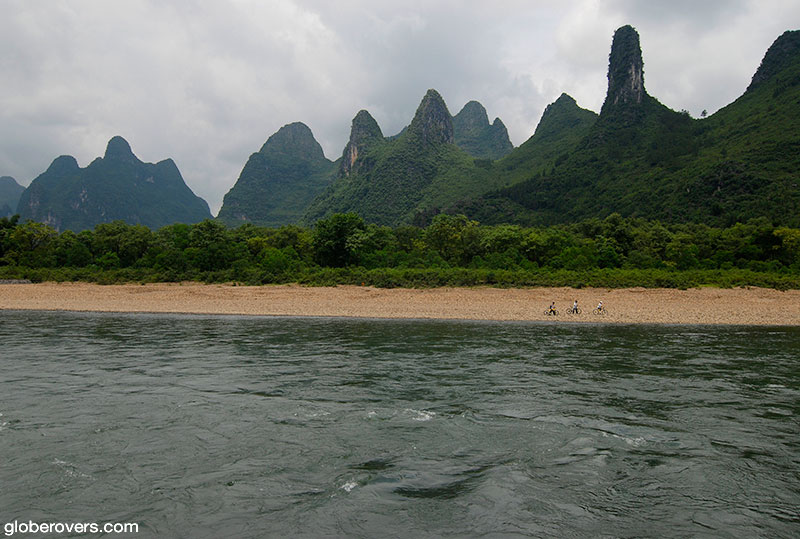
Along the river and outside the town of Yangshuo, many fishermen still rely on the cormorants’ fishing skills for their daily catch. This human-bird coop-living can also be found in Japan and even in Macedonia. A snare is tied near the base of the bird’s throat which allows the bird to breathe, but not to swallow the fish.
A snare is tied near the base of the bird’s throat which allows the bird to breathe, but not to swallow the fish (at least the bigger fish). After a good catch, the fishermen lift the bird out of the water and remove the fish from its throat.

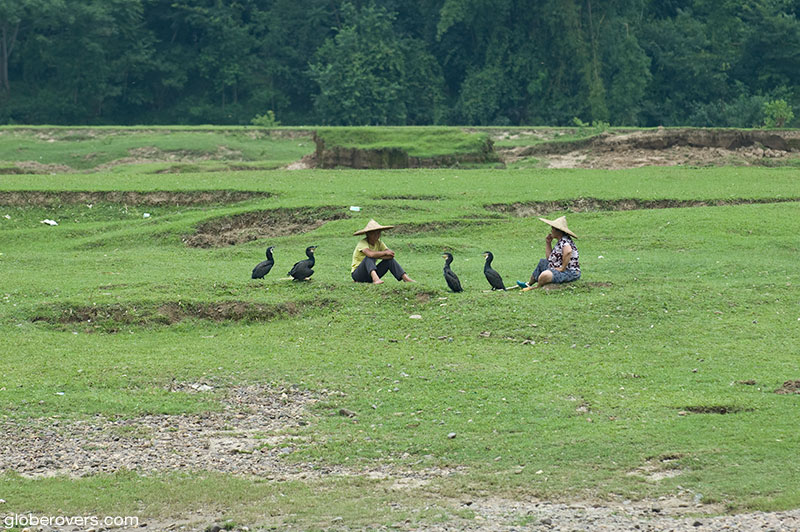
The Town of Yangshuo
The boat trip from Guilin ends on the outskirts of the enchanting (albeit touristy) town of Yangshuo. With several guesthouses and hotels, this is the place to base yourself for a few days to explore the surrounding villages and stunning mountain scenery.
In town, the famous “West Street” is lined with Chinese restaurants, western cafes, fruit stores, and coffee shops. This street never sleeps and is an excellent place for people watching, not to mention the excellent cheap food and local beer.
Rent a mountain bike in Yangshuo and head in any direction. Cycle along the river northwards through several small villages, or head south to Moon Hill which offers a short but tough climb. From the top, the views are spectacular and under a mysterious layer of haze and fog, you will find tranquil scenery comprised of levelled rice terraces and villages.
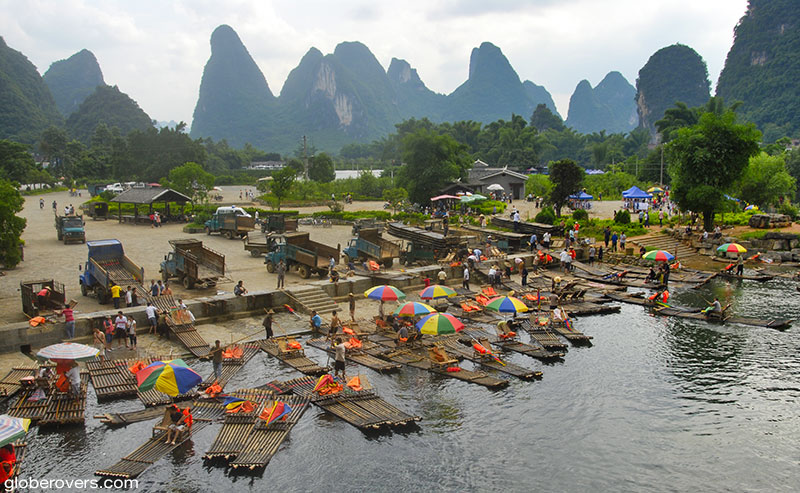
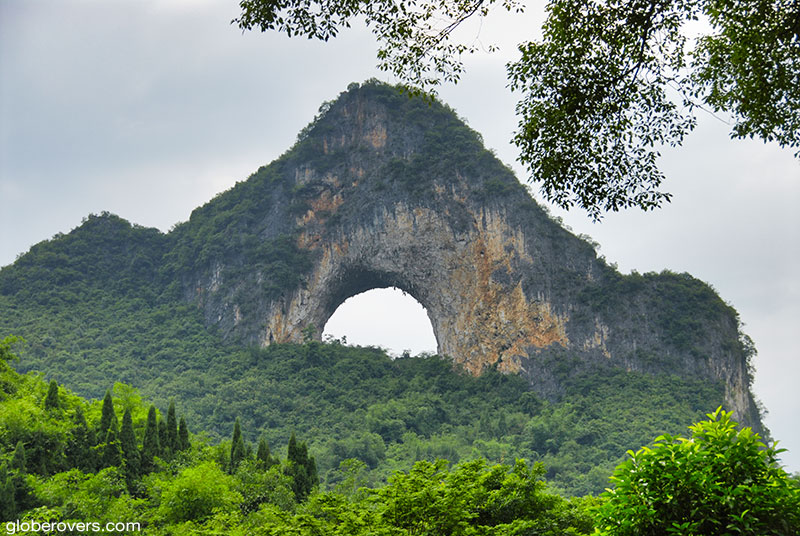
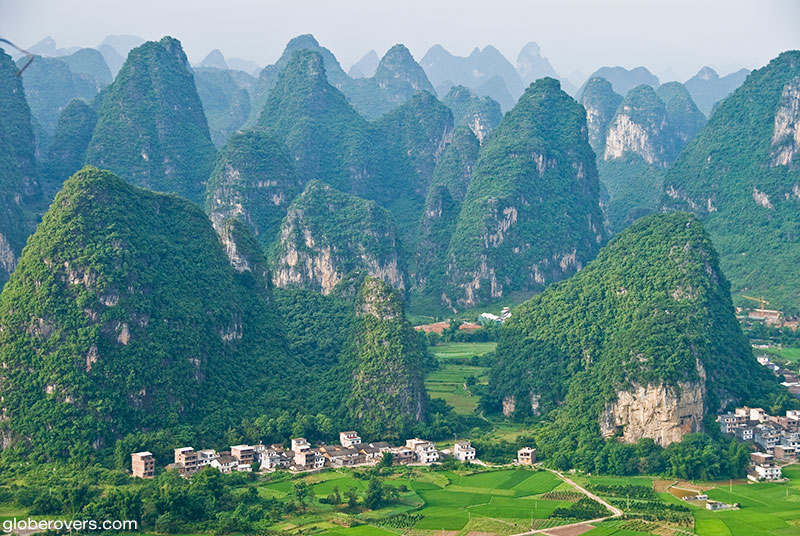
Explore the small paths leading to these villages, stop by the Big Banyan Tree, and get lost while tasting the rural Chinese life. It is believed that the Big Banyan Tree was planted during the Sui Dynasty (581-618) or possibly the Jin Dynasty (265-420). It is now almost 17 metres high, 7 meter in diameter, and covers an area of 1,000 sq meter.
Longsheng Rice Terraces
For the most surreal experience, head north of Guilin to the Dragon’s Backbone Rice Terraces (Longji Terraces) in Longsheng county.
Construction of these terraces began in the Yuan Dynasty (1271-1368) and continued until the early Qing Dynasty (1644-1911). In spring, the stagnant water renders the terraces as ribbons on the hillsides while in summer the green waves are shockingly brilliant. In autumn it is decorated with gold and in winter the terraces are covered in white snow.
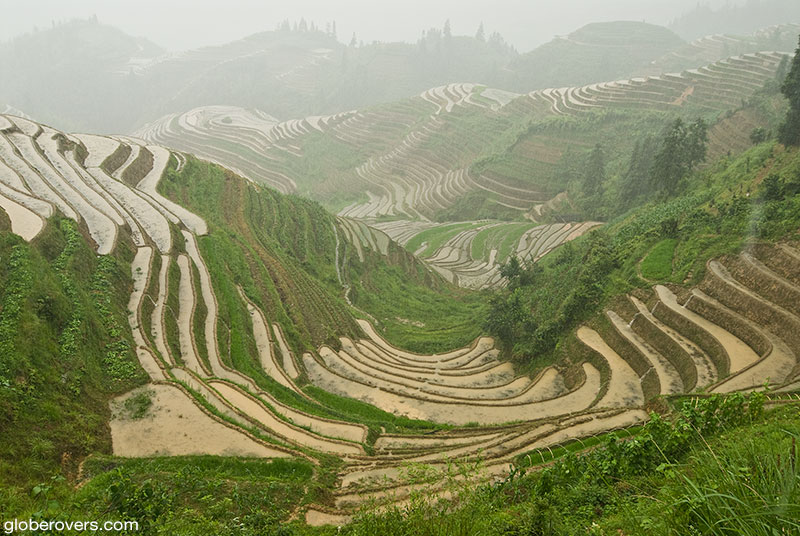
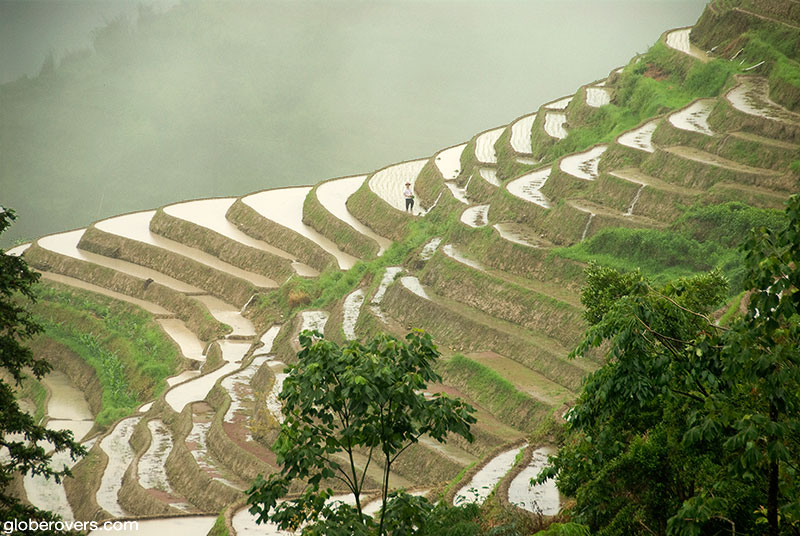
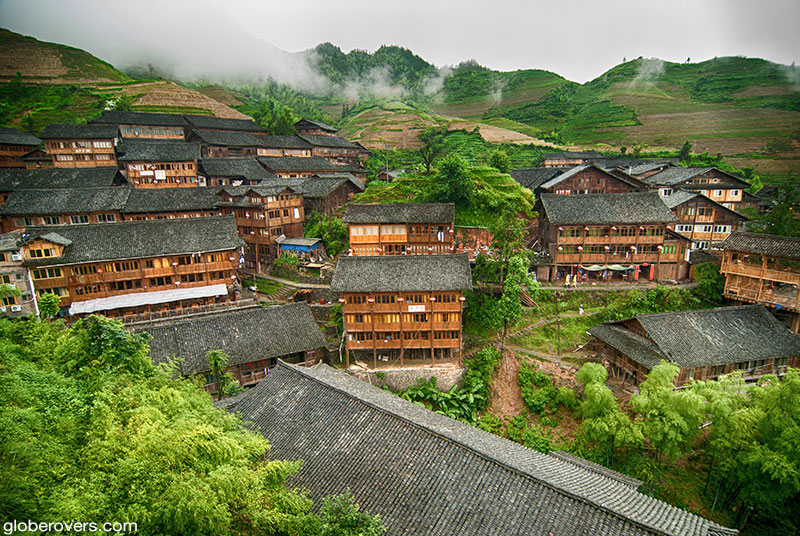


Stay in one of the few small guesthouses in the villages of Long Ji and Ping An and explore the surrounding terraces and hills. It is also possible to have a homestay with a local family enjoying Longji tea and Longji wine.
Longji is a great area to experience China’s ethnic minorities’ culture. The Zhuang and Yao people live here. Visitors can attend their cultural shows which include dancing and singing.
The Longsheng and Sanjiang counties are known for their Dong and Zhuang minority villages. The aromatic, and quite spicy, local food will blow away your taste buds and the traditional singing and dancing of the locals will keep your ears singing for a few days.
Plan on spending at least 5 to 7 days in one of the most beautiful areas of China.
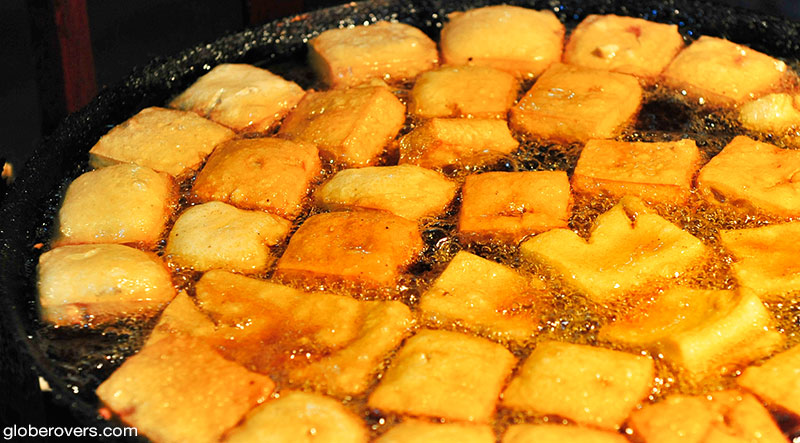
☛ Read more: Ayeyarwady River Boat Journey: Myanmar

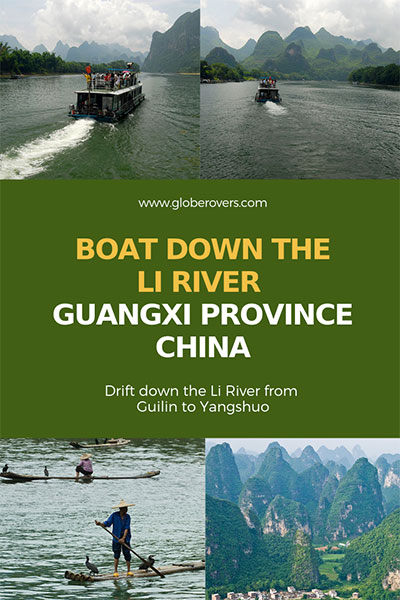

Blog post and photos by Peter who has been travelling almost full-time since 2005 and has been to over 122 countries. He visited several countries, such as Japan, more than 20 times. Peter is Editor-in-Chief and Publisher of GlobeRovers Magazine, an independent travel magazine focused on intrepid destinations.

